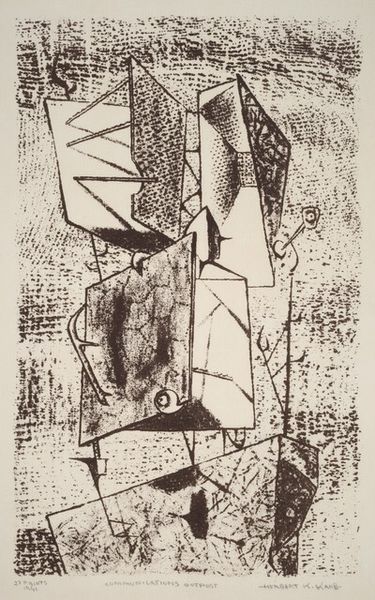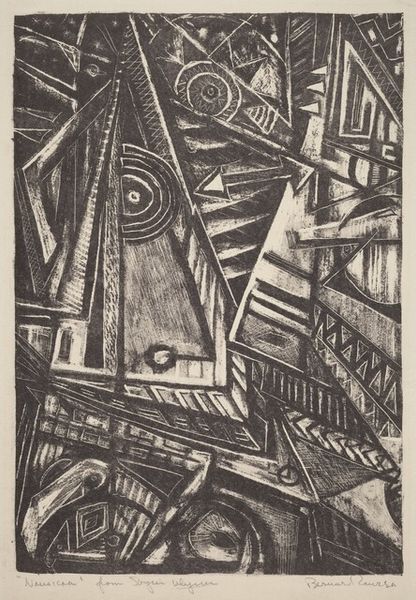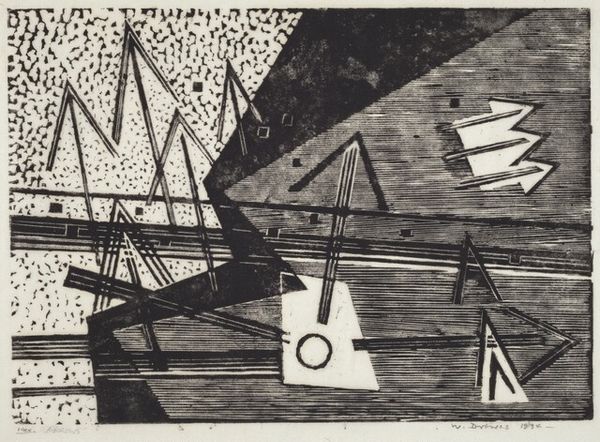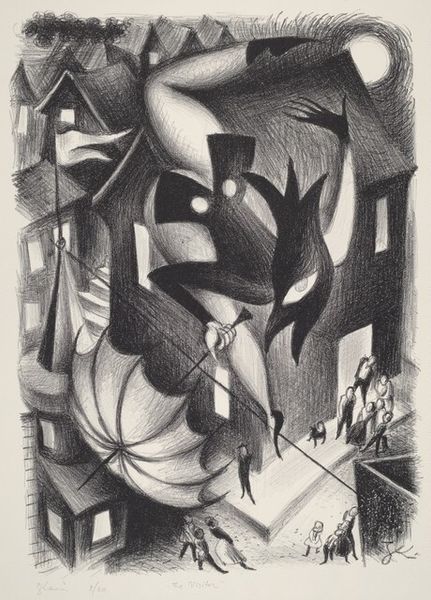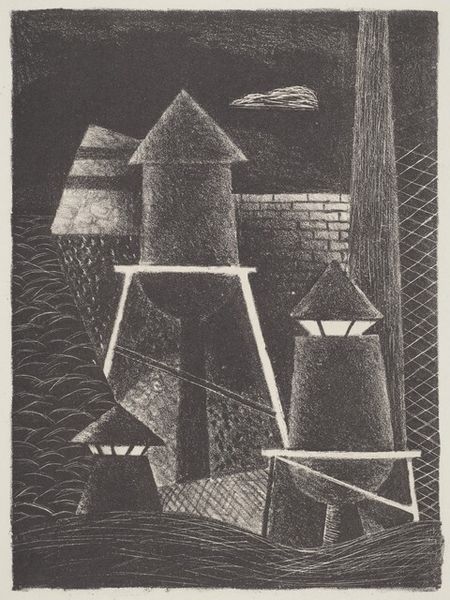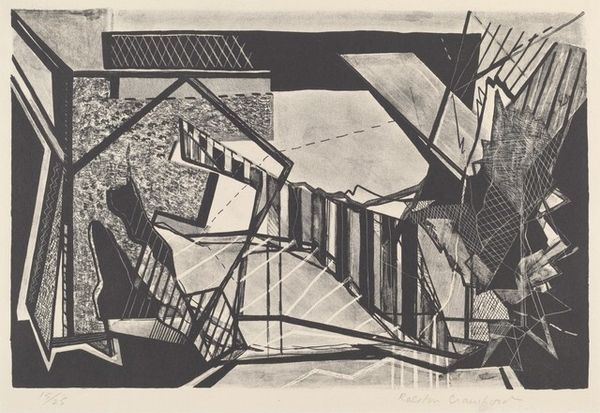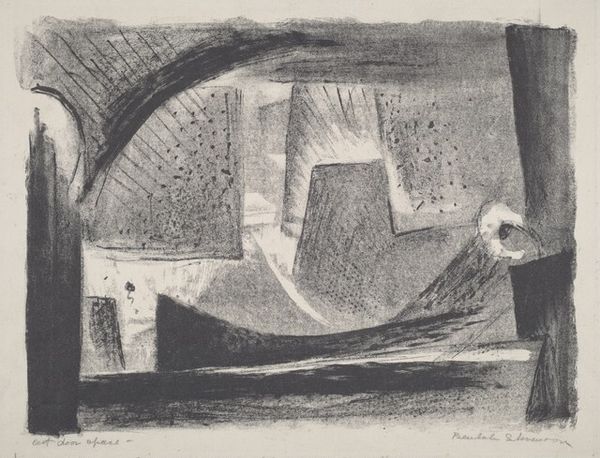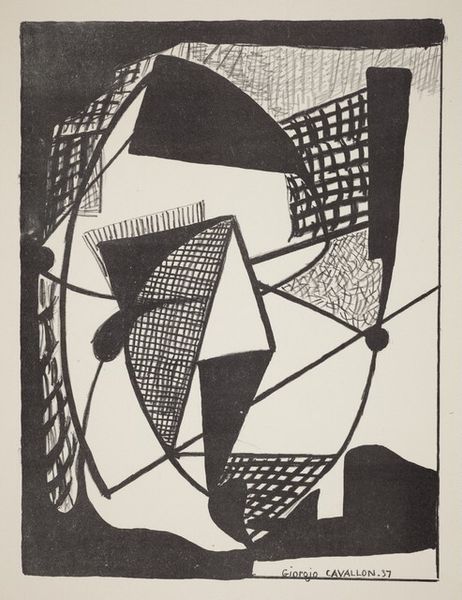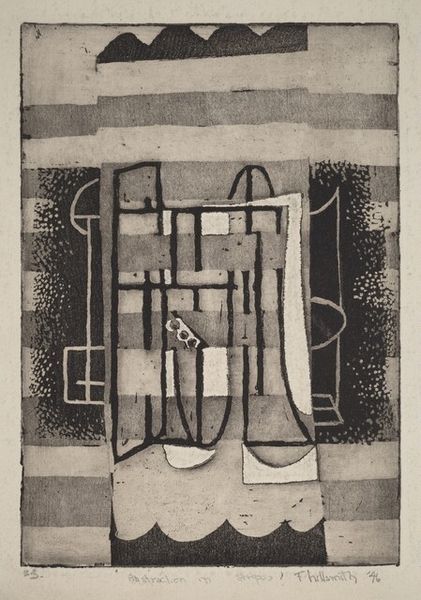
drawing, print, graphite
#
abstract-expressionism
#
drawing
# print
#
abstraction
#
graphite
#
cityscape
Dimensions: Image: 380 x 222 mm Sheet: 503 x 325 mm
Copyright: National Gallery of Art: CC0 1.0
Curator: Looking at this piece, I immediately feel like I've stumbled into the backstage of a particularly perplexing theatre production. Editor: You've hit on something! What we have here is Herman Cherry's "Untitled (Abstract Cityscape)," created sometime between 1947 and 1949. It's a print, using graphite, that really exemplifies Abstract Expressionism. Curator: Abstract cityscape is right! It's a beautiful mess of industrial remnants— pipes, what looks like scaffolding—layered in a way that evokes a tangible, yet utterly non-specific, place. Editor: Precisely! Consider the visual language Cherry employs here. Pipes, scaffolding, and those odd triangular shapes aren't just physical components; they symbolize progress, industry, and, perhaps, even the transient nature of urban existence after the Second World War. Curator: So, the 'cityscape' becomes a symbol in itself, representing not just a place but a moment, a feeling of rebuilding or perhaps disorientation? There’s this potent tension between order and chaos. Those clean lines against the dense graphite shading... It's evocative. Editor: Exactly. Think about what these symbols meant to people at that time. Urban environments were undergoing massive changes. This cityscape speaks to the broader human experience of navigating and negotiating a rapidly changing world. Also, I wonder if this specific arrangement holds some personal or autobiographical relevance for Cherry. Curator: Interesting thought. Perhaps it's about memory, how we piece together fragmented recollections of a place, building our own personalized cartographies. I mean, what city does this even begin to resemble concretely? Editor: It doesn't have to resemble any specific place! The beauty of abstract art is its ability to tap into universal feelings and ideas that reside deep in the subconscious. And the use of grayscale really reinforces this mood— everything’s memory-toned. Curator: Yes, it invites that interiority, which is ultimately what lingers—our feelings and not a specific representation. Editor: Agreed. Cherry gifts us an open-ended narrative— an atmospheric dream-space that invites us to overlay our own experiences. It is less about observation and more about shared humanity and shared emotions within space. Curator: I think I see now this goes beyond mere representation of a city; it gives access to an internal world that is deeply meaningful, open for our subjective reflection and memory. Thanks for walking me through it. Editor: My pleasure! Always glad to see how these seemingly ‘simple’ images unlock so much!
Comments
No comments
Be the first to comment and join the conversation on the ultimate creative platform.

